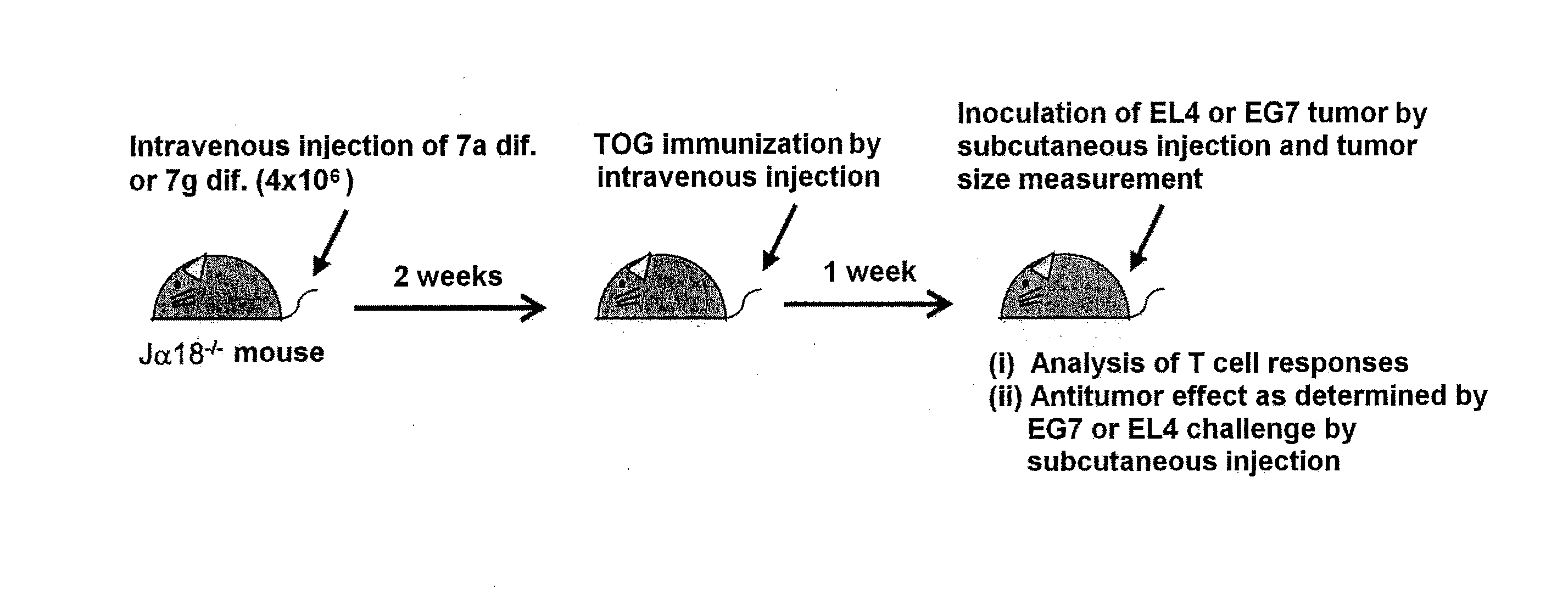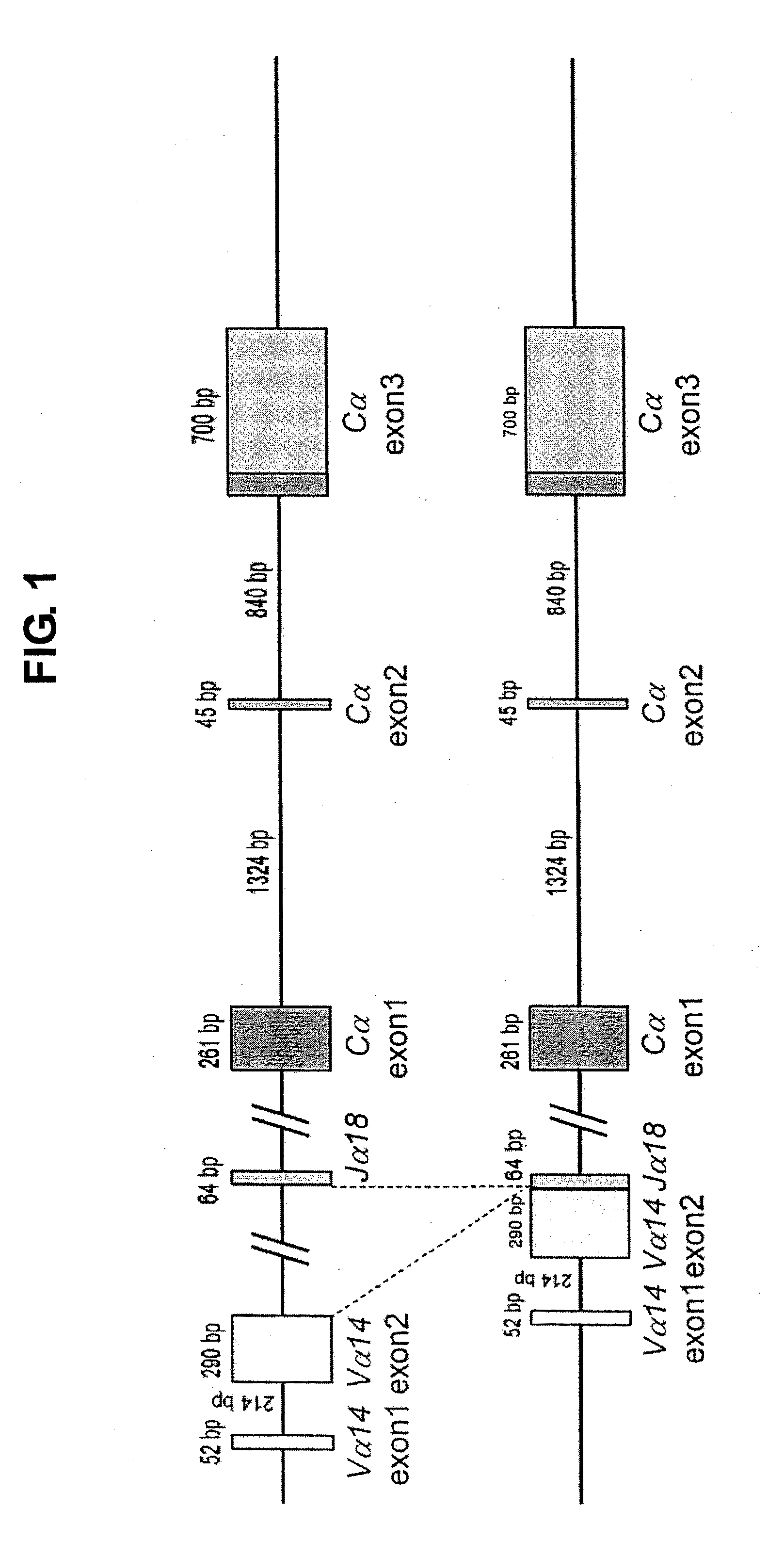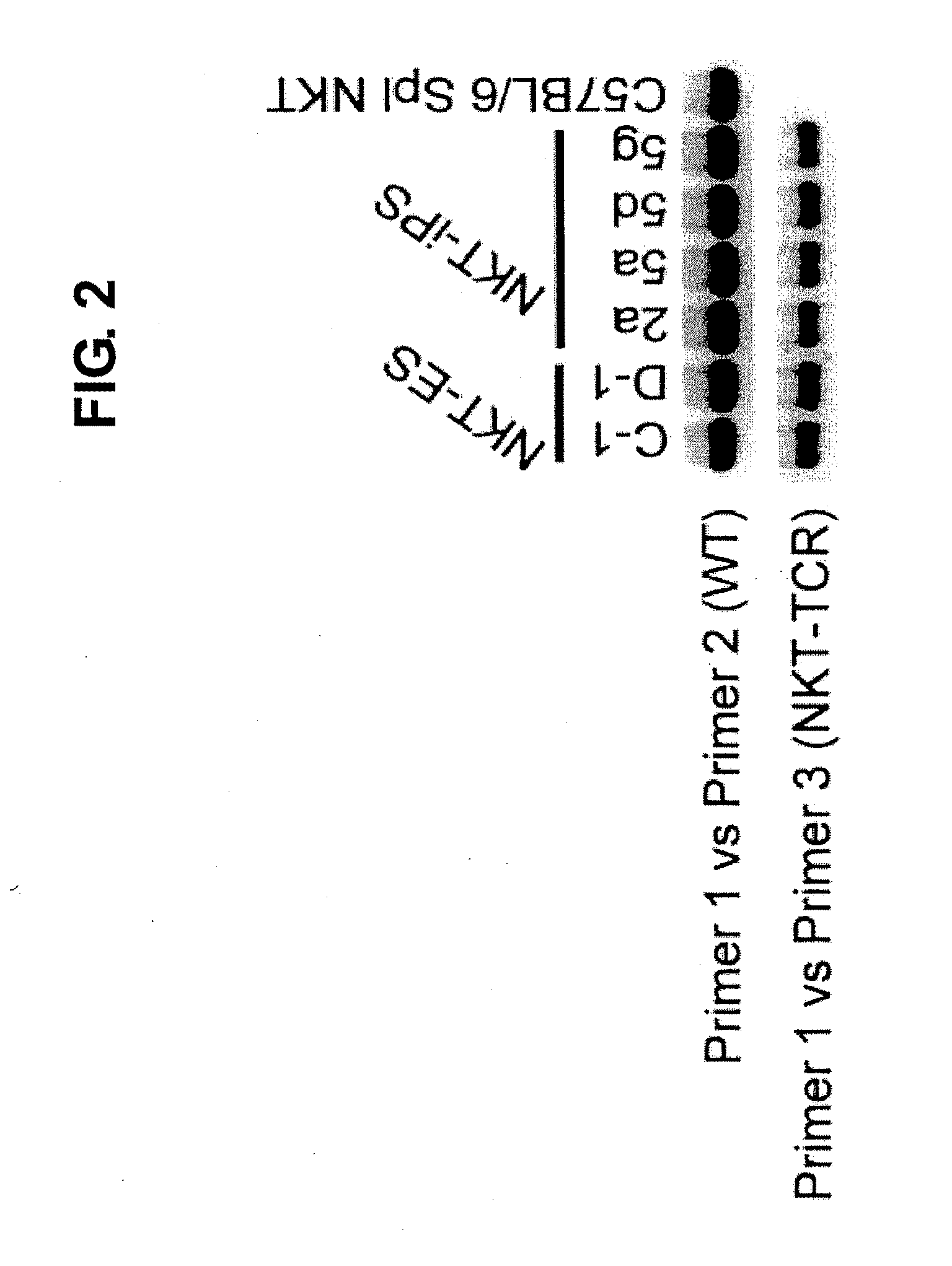NKT CELL-DERIVED iPS CELLS AND NKT CELLS DERIVED THEREFROM
a technology of which is applied in the field of nkt cell-derived ips cells and nkt cells derived therefrom, can solve the problems of increasing the number of transgenes, difficult reprogram of differentiated cells, and inability to achieve the activation of nkt cells sufficient to obtain a therapeutic
- Summary
- Abstract
- Description
- Claims
- Application Information
AI Technical Summary
Benefits of technology
Problems solved by technology
Method used
Image
Examples
example 2
Characterization of NKT-iPS Cells
[0120]To demonstrate that the four clones of NKT-iPS cells established in Example 1 were derived from NKT cells, whether rearrangement to NKT-TCR had occurred was determined by genomic PCR. In the cells having NKT-TCR, either TCRα region had already been rearranged to Vα14-Jα18 (FIG. 1); hence, the presence or absence of rearrangement was checked by performing a PCR using the primers shown below with the genome of each NKT-iPS clone as the template.
SEQ ID NO: 1:Primer 1: 5′-gacccaagtggagcagagtcct-3′SEQ ID NO: 2:Primer 2: 5′-tcacctatgtctcctggaagcctc-3′SEQ ID NO: 3:Primer 3: 5′-cagctccaaaatgcagcctccctaa-3′
[In case where rearrangement to Vα14-Jα18 has not occurred (wild), a 349 bp band is amplified by a PCR using primer 1 and primer 2; meanwhile, in case where rearrangement to Vα14-Jα18 has occurred (NKT-TCR), a 317 bp band is amplified by a PCR using primer 1 and primer 3.]
[0121]As a result, all of the four established clones were found to have either ...
example 3
Genetic Expression Analysis of NKT-iPS Cells
[0122]To determine whether the NKT-iPS cells identified in Example 2 had been reprogrammed to iPS-like cells, gene expression profiling was performed. Total RNA was prepared from each of NKT-iPS cells, NKT cell nuclear transplantation embryo-derived ES cells (NKT-ES cells), and peripheral NKT cells by the phenol-chloroform method, the expression of a series of gene groups whose expression in ES cells is known was analyzed by the one step RT-PCR method (produced by Invitrogen Company). The genes analyzed and the sequences of the primers used are shown below.
Endogenous Oct3 / 4:(SEQ ID NO: 4)5′-tctttccaccaggcccccggctc-3′(SEQ ID NO: 5)5′-tgcgggcggacatggggagatcc-3′Endogenous Sox2:(SEQ ID NO: 6)5′-tagagctagactccgggcgatga-3′(SEQ ID NO: 7)5′-ttgccttaaacaagaccacgaaa-3′Endogenous Klf4:(SEQ ID NO: 8)5′-gcgaactcacacaggcgagaaacc-3′(SEQ ID NO: 9)5′-tcgcttcctcttcctccgacaca-3′Endogenous c-Myc:(SEQ ID NO: 10)5′-tgacctaactcgaggaggagctggaatc-3′(SEQ ID NO: 11)...
example 4
Morphological Examination of NKT-iPS Cells
[0125]The morphology of the NKT-iPS cells established in Example 2 was examined under a microscope. As a result, it was demonstrated that the localized expression of SSEA1 and Oct3 / 4 and the morphology of the NKT-iPS cells were very similar to those of ES cells (FIG. 5).
PUM
 Login to View More
Login to View More Abstract
Description
Claims
Application Information
 Login to View More
Login to View More - R&D
- Intellectual Property
- Life Sciences
- Materials
- Tech Scout
- Unparalleled Data Quality
- Higher Quality Content
- 60% Fewer Hallucinations
Browse by: Latest US Patents, China's latest patents, Technical Efficacy Thesaurus, Application Domain, Technology Topic, Popular Technical Reports.
© 2025 PatSnap. All rights reserved.Legal|Privacy policy|Modern Slavery Act Transparency Statement|Sitemap|About US| Contact US: help@patsnap.com



